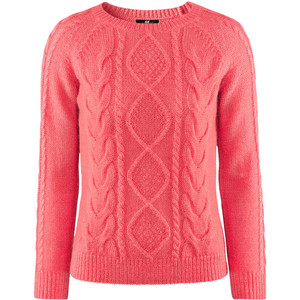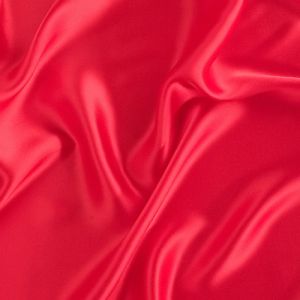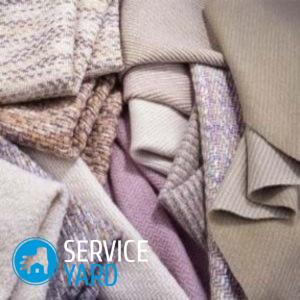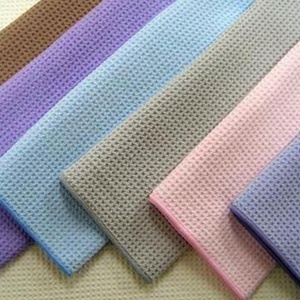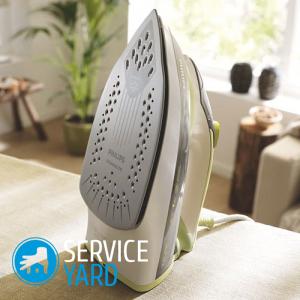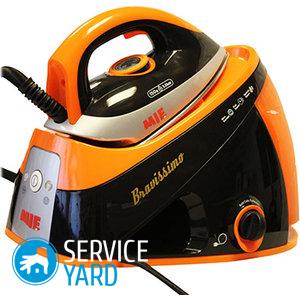Iron temperature
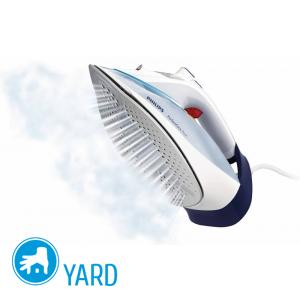
- How to choose the right electric iron?
- Technical data of various types of ironing devices
- What can the badges on the label tell us?
- Possible temperature indications on the iron
- How to iron a woolen thing?
- Tidy up silk clothes
- Ironing linen and cotton products
- Rayon, plush, velvet
- What materials do not iron?
- Ironing tips:
- Stock footage
Ironing is a rather laborious routine. Today, “smart” products are presented on the home appliance market, which greatly simplifies this process. It is enough to set this or that mode, and the necessary temperature of the iron is automatically set. However, the human factor has not been canceled by anyone. As soon as the hostess only gaps a little and incorrectly sets the program, the thing will be hopelessly ruined.
to contents ↑Important! Before ironing any product, it is necessary not only to know the ironing modes, but also to carefully study the label on it, because it is almost impossible to determine the properties of textiles by touch. For example, there are types of synthetic materials that tactilely resemble natural cotton. If you use the mode intended for natural fibers for ironing, the fabric will deteriorate.
How to choose the right electric iron?
Probably, many were faced with such a problem as the choice of an ironing device. The data specified in the passport also does not add clarity: some obscure set of letters and numbers.
Let's try to deal with the notation:
- Electric iron with a temperature regulator (marking UT).
- Electric iron with steam humidifier and temperature controller (UTP). If the model is additionally equipped with a sprayer, the marking will be UTPR.
- The weighted model of an electric iron equipped with a temperature regulator is designated as UTU.
to contents ↑Important! The numbers that follow the letter designation show the power of the product in watts and mass in kilograms.
Technical data of various types of ironing devices
Assessing the performance of the device, you need to know to what temperature the iron is heated, whether it is possible to regulate, what power it consumes. Irons equipped with a temperature regulator are irreplaceable in this regard.
Important! They have a small mass, are convenient, are characterized by economical energy consumption.
Here are the advantages of such products compared to electric irons without thermostats:
- Energy saving - from 10 to 15%.
- Increase in labor productivity - from 40 to 60%.
- Reducing the heating time from 15-20 to 3-8 minutes.
- The ability to maintain a given temperature of the iron during the ironing process.
- The presence of a scale of names of fabrics, which makes it possible to choose the right mode of operation.
Consider the operational characteristics of different types of electric irons in more detail.
Important! In the process of choosing home appliances for your home, be sure to consider the various options. For example, read about which is better - iron or steam generator.
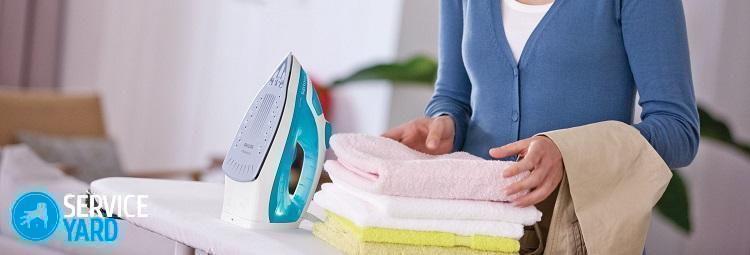
Without thermostat:
- Power consumption ranges from 320-400 W, with a nominal voltage of 127-220 V.
- The mass is 2.1-3 kg.
- A spiral heating element is used.
With thermostat:
- Power consumption - 200-1000 watts.
- The value of the nominal voltage is 127-220 V.
- Heating elements: tubular and spiral type.
- Weight - 0.65-2.55 kg.
With humidifier and temperature controller:
- Power consumption - 750-1000 watts.
- The value of the nominal voltage is 127-220 V.
- Heating elements: tubular type.
- Weight - 1.25-2.0 kg.
Important! Remember that a lot depends on the quality of the selected device. Here it will be useful for you to find out which iron sole is better.
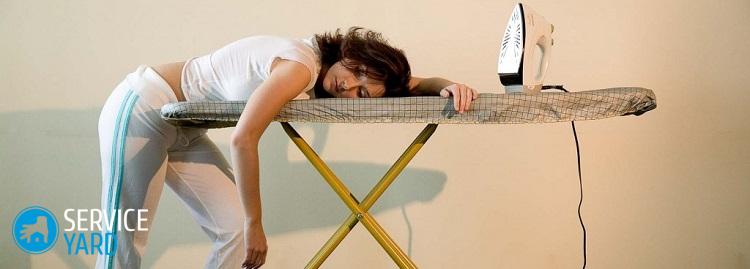
What can the badges on the label tell us?
A label on things is a kind of care instruction for it. Permissible ironing modes are shown in the form of an iron in different designs:
- Image ironing - the material tolerates ironing with an electric iron. Machine ironing is acceptable.
- An iron with three dots in the middle - textiles can be ironed with an iron, heated to a temperature of 200 degrees (for example, for cotton and linen).
- Ironing in a circle - the temperature of ironing is not more than 140 degrees. If there is no temperature gauge on the electric iron, set the slider to about the middle.
- Iron with two points inside - the maximum temperature of the iron is 130 degrees. These are things from fabrics like polyester, polyester, silk, wool, viscose.
- Ironing with one point inside - the permissible temperature of ironing does not exceed 120 degrees. This mode is used for delicate fabrics. Ironing should be done with utmost care and accuracy.
- The crossed out iron - it is impossible to iron a thing! Moreover, not only with an iron, but also with a steam generator.
- Iron with crossed steam - this sign indicates that it is forbidden to process the product with steam.
These markings make it possible to choose the appropriate ironing mode for the product.
Important! Ironing begins with lower degrees of temperature of the iron, gradually increasing it.
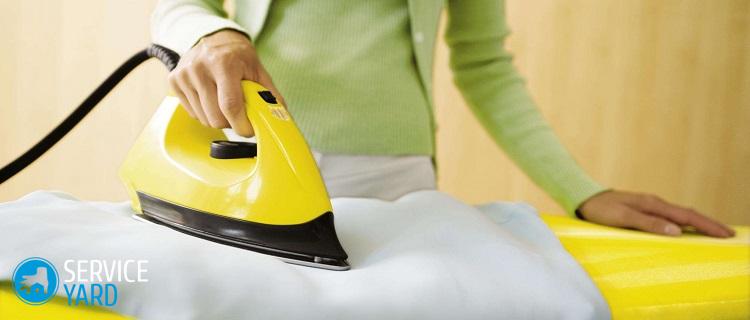
Possible temperature indications on the iron
Home appliance manufacturers are trying to make the task of housewives as easy as possible. The relay of many models of irons is not marked with a scale in degrees, but with the name of the fabric: “cotton”, “viscose”, “linen”, etc.
Important! Before ironing a new piece of clothing, you need to test the mode on a piece of cloth, which is sold with the thing. If the sole of the device does not stick to the fabric, you can start ironing.
Sometimes it happens that the label is lost. How to choose the ironing mode and put things in order without ruining it?
to contents ↑How to iron a woolen thing?
The temperature of the iron is 180 degrees. To smooth the coat well, it needs to be moistened even more than cotton. The disadvantage of pure wool is that they quickly lose shape. If you do not care for the material correctly, it will “sit down” or stretch. For this reason, woolen things are ironed turned inside out, through a material soaked in water.
Important! This applies only to fabrics made of wool. Knitwear must not be ironed, as they can be deformed. And also, so that you do not have to update the wardrobe of warm clothes every season, you need to know everything about how to wash wool.
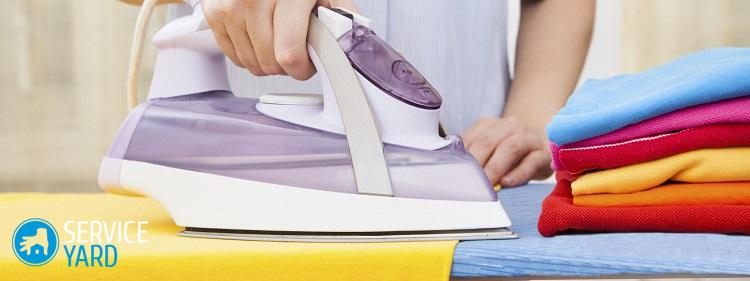
Tidy up silk clothes
Silk clothes are ironed, after turning the thing inside out. When ironing, moistened gauze or fine natural cloth is used.
Important! Since silk is a whimsical fabric enough to keep your clothes beautiful longer, use our selection rules for washing silk.
When ironing a silk product, remember the following rules:
- Even a slight increase in the temperature of the iron (degrees) can result in clothing being scorched. The same result awaits you if you stop the electric iron for a long time in one place.
- When steaming or spraying with water from a spray bottle, stains may remain on the fabric.
Important! Silk needs to be ironed a little half-finished. If the product is dry, hold it slightly in a moistened towel.
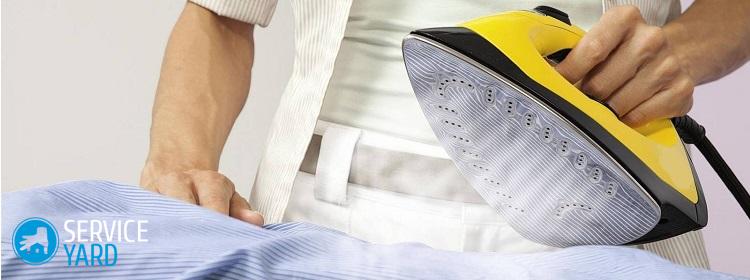
Ironing linen and cotton products
Those who dealt with these fabrics know that you need to set the maximum temperature of the iron on the iron. But even after that, the linen cloth remains a little wrinkled.
Here are a few secrets to successful ironing:
- One hundred percent cotton is ironed by heating the sole to 150-200 degrees. In this case, you need to spray the fabric with a spray gun or use the steaming function.
- A mixture of flax and cotton is ironed at a temperature of 180-200 degrees, with a plentiful wetting of things with water.
- Cotton with polyester is ironed at a temperature of no higher than 110 degrees.
- Clean flax is ironed on the front side at a very high (up to 230 degrees) temperature.
Important! This is a very high temperature, so you need to be careful not to burn the thing. And you also need to consider other properties of such materials when caring for them. In this case, we are also ready for a separate article about washing cotton.
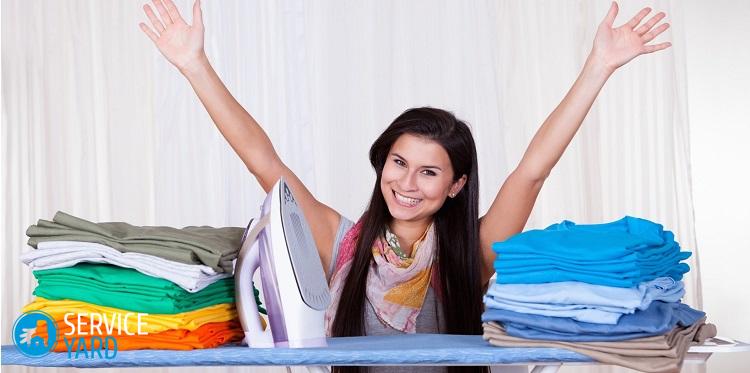
Rayon, plush, velvet
Viscose is a very popular material, due to its brightness, ease of care, pleasant appearance and affordable cost. However, it must be remembered that viscose is a synthetics that requires great care when processing with an iron:
- You need to iron such products at a temperature not exceeding 100 degrees.
- Viscose must not be steamed or sprayed with water. Also read about how to wash viscose.
- Velvet and plush products are ironed from the inside through the fabric, avoiding strong pressure on the iron.
- It is preferable to steam things from velveteen in an upright position on the shoulders using a vertical steamer.
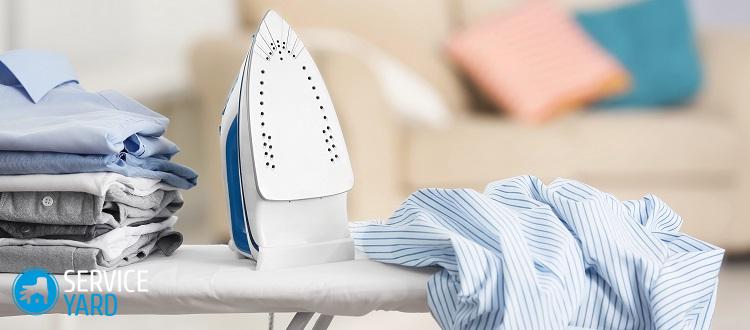
What materials do not iron?
Processing with an electric iron is not permissible for all types of fabrics, regardless of what temperature the iron is heated. Some products can neither be steamed nor ironed:
- Polyester. As a rule, manufacturing companies prohibit ironing. However, if necessary, the product can be ironed through textiles. The temperature of the soleplate does not exceed 110 degrees.
- Nylon. The product is dried on the shoulders.
- Terry products. When ironed, they become less soft.
- Products with stains from grease, coffee, etc.
to contents ↑Important! For washing “capricious” things, a delicate washing mode is used. Such products are dried on special coat hanger.
Ironing tips:
- If during ironing the material turned out to be slightly tan, the stain is moistened with a solution of boric acid, and then the product is rinsed in slightly warm water.
- A spot on a white matter can be removed with water and ammonia dissolved in it (2-3 drops of ammonia per ½ cup of water).
- The arrows on the trousers remain for a longer time, if you wipe them with soap from the wrong side, and then iron them through a damp cloth.
Stock footage
Now you can choose the right temperature for the iron and set the modes for different types of textiles. So - your clothes and interior decor will always be in order.




